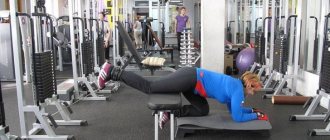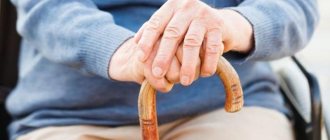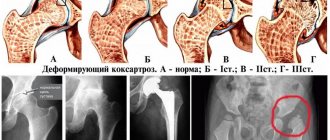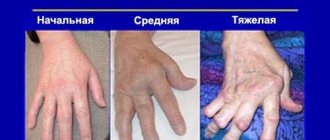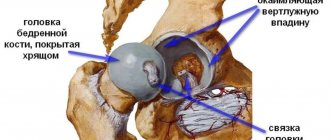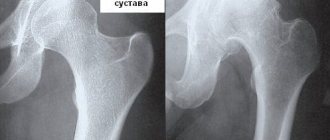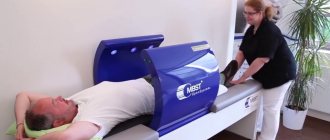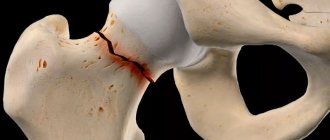Coxarthrosis is a disease that, in the absence of proper therapy, can lead to disability over several years. Not so long ago, coxarthrosis was considered a disease of older people, but recently it has become increasingly common in young patients.
The causes of this disease are mainly genetic, but the pathological process can be activated by frequent hypothermia of the joints, a sedentary lifestyle, or inattention to the first symptoms. Stage 2 coxarthrosis triggers irreversible processes in which the functions of cartilage joints are disrupted, and the only thing that can be done in this case is to slow down the progression of the disease.
We will look into whether coxarthrosis of the hip joint gives you disability in this article.
Characteristics of the disease and ability to work
Coxarthrosis is characterized by a violation of the integrity of the surface of the articular apparatus against the background of slow metabolism. Pathology leads to the destruction of cartilage tissue, bone deformation, which weakens motor activity. If the disease is not treated, the patient becomes disabled.
There are many reasons for metabolic disorders - sedentary lifestyle, hypothermia, stress and much more. The peculiarity is the irreversibility of the processes. Disability for coxarthrosis can be assigned at 2, 3, 4 degrees of severity of the disease.
The 4th stage is characterized by complete immobilization, as a result of which a disability is clearly indicated, so attention should be paid to the other 2:
- The second degree is characterized by destructive processes due to which the patient experiences pain during movement and at rest. The pain is localized not only in the hip joint, but also in the groin, knees, legs, and lower back. The man begins to limp. As the pathology progresses, the muscles atrophy, the affected limb shortens, and a peculiar crunching sound is heard in the joint.
- With the 3rd degree, the cartilage is completely destroyed, pain is accompanied all the time. A person can no longer cope without a cane.
Types of hip joint replacement
The type of endoprosthetics performed depends on the nature of the pathological process and the condition of the patient’s body.
Total view
A frequently used method. All parts of the affected joint are removed, and a prosthesis is installed in their place.
Total endoprosthetics are considered more durable and less likely to cause complications. Patients up to 80 years old can replace a destroyed hip joint with a prosthesis.
The head of the femur bone is not removed. Damaged areas of cartilage are excised, and the head is covered with a special metal cap, which ensures the bone glides during movement.
Surface prosthetics are less traumatic for the patient. It is carried out when the pathological process affects only cartilage tissue.
Single pole view
The operation is performed when the head of the femur needs to be replaced. The implant is inserted into the acetabulum and comes into contact with the cartilage.
The implanted prosthesis has a head with a double movement unit. Installation of a bipolar structure reduces the load on the cartilage and allows the person to lead an active lifestyle after surgery.
What disability groups are there for coxarthrosis?
Do they give disability for coxarthrosis of 2 and 3 degrees, and which group:
- The first group - the patient cannot move around comfortably, most often only in a wheelchair. Therefore, it is assigned to patients with grades 3 and 4 of severity of hip coxarthrosis. There is no ability to work.
- In the second group, motor ability is partially lost - the patient can move with a cane, but cannot care for himself. The hip and knee joints are affected, the leg is shortened by at least 7 cm. Coxarthrosis is assigned to the 2nd and 3rd degrees. Functionality is partially preserved with the help of special devices.
- In group 3, the mobility of the hip joint is slightly limited. Consequently, the ability to work is maintained. In some cases, it is assigned to stage 2 coxarthrosis.
Degrees of statodynamic function (SDF)
There are only 4 of them:
- What disability group is given for grade 3 knee gonarthrosis?
- Minor violation of SDF. The distance walked is 3–5 km, the pace is 90 steps/minute, aching pain. X-ray – stage 1 DOA.
- Moderate violations of the SDF. A contracture of the joint is formed, movements are limited. The patient can walk with lameness and pain only 2 km, then rest so that the pain goes away. The leg is shortened to 4 cm. Muscle strength is 40% less. X-ray - stage 1-2 DOA. Later, arthralgia and lameness are constant, the patient can walk only 1 km with a cane, the walking pace is 45–50 steps/minute, the contracture is pronounced, shortening is 6 cm, the volume of the thighs on both legs differs by 4–5 cm and 1–2 cm on the legs , muscle strength is reduced by 70%. X-ray shows stage 2 DOA.
- Pronounced violations of the SDF. Arthralgia in the lower back and both joints, shortening of 7 cm or more, lameness. A person walks only 0.5 km on crutches at a pace of 25 steps/minute. The difference in the hips is more than 6 cm, in the lower legs - more than 3 cm. The muscles are atrophied, the decrease in strength is more than 70%. X-ray – 2–3 degree DOA. Movement disorders are decompensated, radicular syndrome is observed.
- The changes in the SDF are significant: any movement is impossible. The patient lies most of the time or moves only within the apartment and only with a walker.
What to do to register disability?
Disability is assigned on the basis of a decision made by a medical and social expert commission, that is, MSEC. The attending physician must refer the patient there.
What needs to be done and how to obtain disability for 3rd degree or 2nd degree hip coxarthrosis:
- The doctor will inform you about the presence of joint dysfunctions and the chance of disability;
- The doctor refers the patient to other specialists in your clinic;
- You go to MSEC on the direction of your treating specialist, take with you all the collected extracts and an outpatient card.
Main ITU criteria
Medical and social examination is based on the following criteria:
- The commission carefully studies all the results of the patient’s examination over 3 years;
- MSEC members pay attention to the number of patient visits, relapses, degree of joint damage and discharges from specialists. Particular emphasis is placed on the functionality of the hip joint;
- The fact of the duration of the periods of therapeutic measures is established, as well as how much the patient’s condition worsens or improves;
- Loss of permanent work skills - if the patient can no longer work in the same place due to coxarthrosis or excessively frequent and long sick leave is noted;
- The degree of immobilization is if the patient needs outside and social assistance. For example, a person cannot take care of himself or work independently;
- If surgery was performed, the commission examines the results of the operation. If the operation is successful, temporary disability may be assigned only for the period of rehabilitation.
Process nuances
It is important to know some of the nuances and conditions under which a patient is given a disability group in order to count on something before the commission meeting. In most cases, people with the second stage of coxarthrosis need to know them. If symptoms of the third are already observed, then disability will be given in any case.
The group can be assigned at stage 2 if coxarthrosis is bilateral, gaining momentum, and there has been a shortening or lengthening of the limb by more than 7 centimeters. Often under such conditions they give disability group 3, but there are cases where they are given group 2. In principle, if there is a diagnosis of stage 2 coxarthrosis, you can get any of the three groups, but only for appropriate indications.
Disabled people of the third group can work only in certain conditions. They are entitled to a 50 percent discount on public transport and social assistance in the amount established by law. There are also benefits for utilities and the purchase of medicines.
As for disability group 2, the patient is prohibited from working, since motor functions are significantly impaired. Because of this, social benefits are slightly higher than for people with group 3. Patients with this status must undergo a commission every year and confirm the disease. If you manage to overcome it or significant improvements are observed, then the group will most likely be removed.
The first group of disabilities is characterized by complete loss of motor functions due to joint destruction. A person already has advanced coxarthrosis, and it is impossible to cure it. The patient needs constant outside support.
After receiving the status of a disabled person, a person has the opportunity to receive many benefits:
- free medications or provision of significant discounts on them;
- free vouchers to health resorts;
- removal from work in hazardous work;
- the possibility of endoprosthetics on preferential terms and more.
After the operation, the person may well return to normal life. In this regard, it is better to get a group for your own health.
When disability is assigned at 3rd degree of severity
Disability of the 1st group is unconditionally assigned to coxarthrosis of the 3rd degree with complete ankylosis, that is, immobility of the joint. In this case, joint replacement surgery is recommended. This is the most severe group, in which the patient cannot move or care for himself. Accordingly, he needs the care of others and material support in the form of a disability pension, since the person becomes completely incapacitated.
The second disability group for coxarthrosis of the hip joint, degree 3, is assigned when the patient’s motor activity is significantly limited. A person can move, but only with crutches.
Feature - ability to work can be partially preserved with the organization of a specialized workplace. For example, sedentary work.
Causes of degenerative pathogenesis
The disease is of primary and secondary types. In the primary type, the circumstances of its occurrence are still unclear to medicine, that is, the lesion develops spontaneously and for no apparent reason. The secondary type of pathology becomes a consequence of injuries, poor lifestyle, and certain ailments. Various factors can influence the development of this disease and trigger a destructive mechanism, most often these are:
- consequences of injuries - local fractures, dislocations, bruises, ligament damage, chronic microdamages, etc.;
- excessive physical activity;
- sedentary and sedentary lifestyle;
- excess body weight;
- long-term infections in the body;
- rheumatoid arthritis;
- smoking abuse;
- age-related aging of the body;
- hormonal imbalance and endocrine pathologies, especially diabetes;
- metabolic diseases;
- congenital anomalies of hip joint development (dysplasia, congenital dislocation);
- any problems with the spine;
- genetic predisposition.
There is a direct relationship between excess weight and the likelihood of joint problems.
Which group is assigned for coxarthrosis of the 2nd degree?
Disability with arthrosis of the hip joint stage 2 is problematic, since complete damage to the joint has not yet occurred. Most often they give the third disability group, less often the second.
Reasons for assigning a group:
- Bilateral coxarthrosis stage 2 – disability is given because both sides of the joint are affected simultaneously, as a result of which the person cannot fully move;
- When the underlying disease is combined with gonarthrosis (grade 2 or 3);
- When the lower limb is shortened by at least 7 cm;
- Rapid progression of the pathology.
For the second degree of severity of coxarthrosis of the hip joint, annual confirmation of disability is required. In this case, the commission must take place not in the clinic where the patient was observed, but directly in the medical and social expert commission.
The main criterion for assigning a group is limited joint mobility, due to which the patient cannot fully work and care for himself. The proof should be documentation drawn up after a comprehensive diagnosis - magnetic resonance imaging, radiography, arthroscopy. Only in this case can you receive government assistance.
Complications after surgery
According to medical statistics, complications after endoprosthetics appear in 2% of those operated on. Depending on the time of occurrence of negative consequences, complications are distinguished:
- Arising during prosthetics. During surgery, bleeding may occur, allergies to the materials used may develop, and breathing and heart function may be impaired.
- Early postoperative. Wound infection, bleeding, and swelling are common complications. During this period, the first signs of rejection of the implant material may appear (deterioration of healing, severe pain).
- Late. These include loosening of the installed endorotesis, joint dislocations, limited mobility of the limb, and muscle atrophy.
The cause of complications may be poor quality of implant materials, non-compliance with medical recommendations for rehabilitation, or a surgeon’s error in selecting the size of the prosthesis.
In the first year after prosthetics, complications may develop that make a person disabled:
- Dislocations and subluxations that disable the endoprosthesis. More often they occur during heavy physical exertion or due to improper selection of the implant.
- Infection of the prosthesis. Infection in the tissue area near the artificial joint comes from foci of chronic inflammation in the body (sore teeth, genitourinary diseases, inflammatory processes in bones or cartilage).
- Vein thrombosis of the limb. Blood clots occur if the patient refuses to undergo rehabilitation or leads a sedentary lifestyle.
- Periprosthetic fracture. At the site where the wedge-shaped leg of the prosthesis is installed, bone strength decreases and a fracture can occur even several years after endoprosthetics.
- Neuropathy. It develops when the nerve roots are affected during surgery. Impaired innervation leads to decreased mobility and muscle atrophy.
- Implant rejection. When using low-quality materials, the prosthesis “does not take root.” Pain, swelling and hyperemia persist in the joint area.
If the listed complications occur, the patient is assigned a temporary disability group and the necessary treatment is prescribed.
Features of receiving disability
There is no point in talking about how to obtain disability for grade 3 coxarthrosis, since it is assigned in all cases. But it is difficult to obtain disability with the 2nd degree of severity of coxarthrosis. This is a long and complex process that takes not only time, but also the patient’s strength. Because you will have to visit many specialists, moving from one office to another.
And sometimes diagnostic information is collected in different clinics and examination centers. Quite often, patients are refused MSEC. In this case, you can file an application with the court to appeal the decision. You will have to hire a private lawyer. If you and your doctor are confident that you qualify for disability, then you can confidently act.
Often, medical and social experts recommend surgery to the patient. This is endoprosthetics, in which the affected joint is removed and replaced with a prosthesis. After surgery and rehabilitation measures, the disability is removed.
